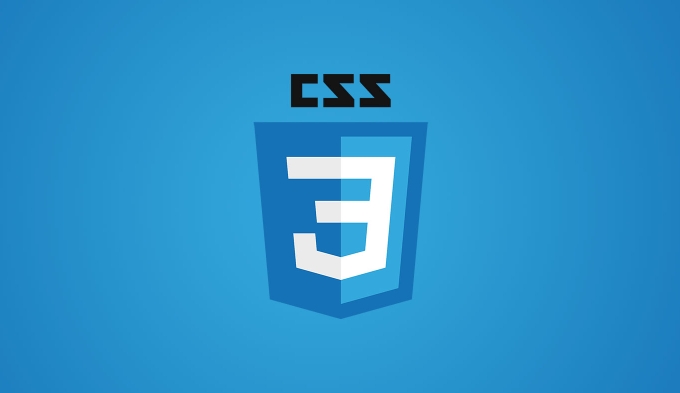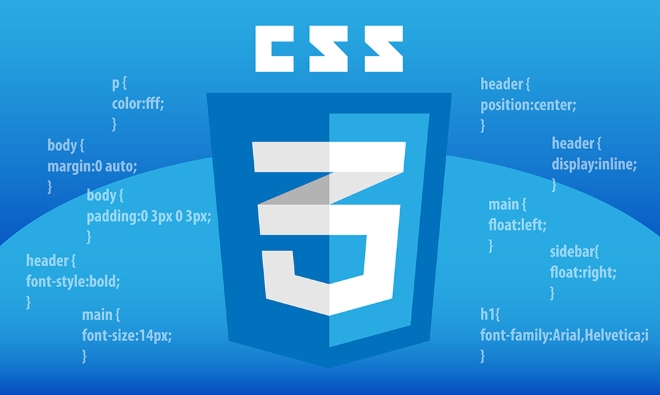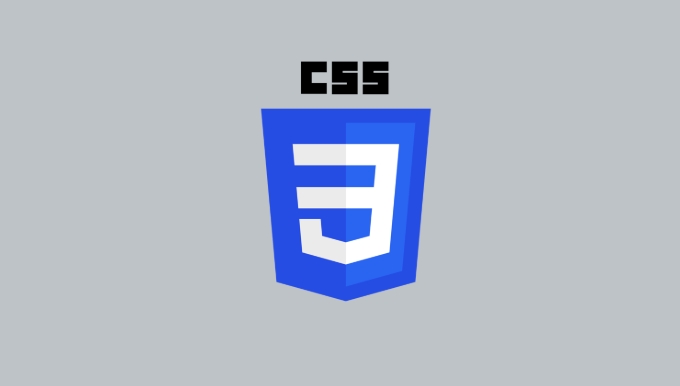The ch and ex units in CSS are relative to font dimensions, with ch equal to the width of the "0" character and ex equal to the height of the lowercase "x". 1. Use ch for horizontal sizing like input widths (e.g., width: 20ch) and readable line lengths (e.g., max-width: 65ch). 2. Use ex for vertical adjustments such as superscripts (e.g., bottom: 0.5ex) or custom underlines (e.g., padding-bottom: 0.2ex). 3. Both units adapt to the current font and size, enhancing typographic alignment. 4. ch is widely supported and reliable; ex has good support but may vary across browsers and fonts. 5. Prefer ch for responsive text layouts and ex sparingly for fine typographic details, ensuring designs scale naturally with text.

The ch and ex units in CSS are relative length units based on the dimensions of a font, making them useful for creating designs that scale with text. Here's how to use them effectively.

What are ch and ex?
-
ch— Equal to the width of the "0" (zero) character in the current font and font size. -
ex— Equal to the height of the lowercase "x" in the current font and font size.
These units are especially helpful when you want spacing or sizing to align naturally with the text content.
Using the ch unit
The ch unit is great for setting widths, paddings, or margins that match the natural character width of monospaced or proportional fonts.

Example:
input {
width: 20ch; /* Can comfortably fit ~20 characters */
}This is commonly used for form inputs to suggest a natural input length without hardcoding pixels.

Another use:
.container {
max-width: 65ch; /* Ideal line length for readability */
}This helps keep text lines at a readable width (around 60–75 characters per line), improving readability on large screens.
? Tip:
chis based on the "0" glyph, so it varies slightly between fonts. In monospace fonts, it’s very consistent; in variable-width fonts, it’s an average reference.
Using the ex unit
The ex unit is less commonly used but can be handy for vertical rhythm or aligning elements with the x-height of text.
Example:
sup {
font-size: 0.6em;
line-height: 0;
position: relative;
bottom: 0.5ex; /* Move up by half the x-height */
}This helps position superscript text more naturally than using em or px, because it aligns with the lowercase height.
You might also use it in custom underlines or decorations:
.underline {
padding-bottom: 0.2ex;
border-bottom: 1px solid;
}?? Note:
excan be inconsistent across browsers and fonts, and support isn’t as robust asch. Use it sparingly and test across devices.
Practical Tips
-
Use
chfor horizontal spacing related to text: input widths, max-widths for paragraphs, indentation. -
Use
exfor fine vertical adjustments involving text alignment (e.g., icons next to text, custom superscripts). - Both units respond to the current font, so they adapt if the font or
font-sizechanges. - They are not fixed units — their actual size depends on the rendered font and size.
Browser Support
-
ch: Well supported in all modern browsers (including recent versions of Edge, Firefox, Chrome, Safari). Note: Older versions of IE had bugs withch. -
ex: Also widely supported, but behavior may vary slightly.
Basically, ch is more reliable and widely useful, while ex is niche but helpful in typographic fine-tuning. Use them when you want your layout to respond naturally to the text itself — not just the font size, but the actual shape of the type.
The above is the detailed content of How to use ch and ex units in CSS?. For more information, please follow other related articles on the PHP Chinese website!

Hot AI Tools

Undress AI Tool
Undress images for free

Undresser.AI Undress
AI-powered app for creating realistic nude photos

AI Clothes Remover
Online AI tool for removing clothes from photos.

Clothoff.io
AI clothes remover

Video Face Swap
Swap faces in any video effortlessly with our completely free AI face swap tool!

Hot Article

Hot Tools

Notepad++7.3.1
Easy-to-use and free code editor

SublimeText3 Chinese version
Chinese version, very easy to use

Zend Studio 13.0.1
Powerful PHP integrated development environment

Dreamweaver CS6
Visual web development tools

SublimeText3 Mac version
God-level code editing software (SublimeText3)

Hot Topics
 How to use PHP to build social sharing functions PHP sharing interface integration practice
Jul 25, 2025 pm 08:51 PM
How to use PHP to build social sharing functions PHP sharing interface integration practice
Jul 25, 2025 pm 08:51 PM
The core method of building social sharing functions in PHP is to dynamically generate sharing links that meet the requirements of each platform. 1. First get the current page or specified URL and article information; 2. Use urlencode to encode the parameters; 3. Splice and generate sharing links according to the protocols of each platform; 4. Display links on the front end for users to click and share; 5. Dynamically generate OG tags on the page to optimize sharing content display; 6. Be sure to escape user input to prevent XSS attacks. This method does not require complex authentication, has low maintenance costs, and is suitable for most content sharing needs.
 PHP creates a blog comment system to monetize PHP comment review and anti-brush strategy
Jul 25, 2025 pm 08:27 PM
PHP creates a blog comment system to monetize PHP comment review and anti-brush strategy
Jul 25, 2025 pm 08:27 PM
1. Maximizing the commercial value of the comment system requires combining native advertising precise delivery, user paid value-added services (such as uploading pictures, top-up comments), influence incentive mechanism based on comment quality, and compliance anonymous data insight monetization; 2. The audit strategy should adopt a combination of pre-audit dynamic keyword filtering and user reporting mechanisms, supplemented by comment quality rating to achieve content hierarchical exposure; 3. Anti-brushing requires the construction of multi-layer defense: reCAPTCHAv3 sensorless verification, Honeypot honeypot field recognition robot, IP and timestamp frequency limit prevents watering, and content pattern recognition marks suspicious comments, and continuously iterate to deal with attacks.
 How to build a PHP Nginx environment with MacOS to configure the combination of Nginx and PHP services
Jul 25, 2025 pm 08:24 PM
How to build a PHP Nginx environment with MacOS to configure the combination of Nginx and PHP services
Jul 25, 2025 pm 08:24 PM
The core role of Homebrew in the construction of Mac environment is to simplify software installation and management. 1. Homebrew automatically handles dependencies and encapsulates complex compilation and installation processes into simple commands; 2. Provides a unified software package ecosystem to ensure the standardization of software installation location and configuration; 3. Integrates service management functions, and can easily start and stop services through brewservices; 4. Convenient software upgrade and maintenance, and improves system security and functionality.
 What are common CSS browser inconsistencies?
Jul 26, 2025 am 07:04 AM
What are common CSS browser inconsistencies?
Jul 26, 2025 am 07:04 AM
Different browsers have differences in CSS parsing, resulting in inconsistent display effects, mainly including the default style difference, box model calculation method, Flexbox and Grid layout support level, and inconsistent behavior of certain CSS attributes. 1. The default style processing is inconsistent. The solution is to use CSSReset or Normalize.css to unify the initial style; 2. The box model calculation method of the old version of IE is different. It is recommended to use box-sizing:border-box in a unified manner; 3. Flexbox and Grid perform differently in edge cases or in old versions. More tests and use Autoprefixer; 4. Some CSS attribute behaviors are inconsistent. CanIuse must be consulted and downgraded.
 How to compile SCSS to CSS?
Jul 27, 2025 am 01:58 AM
How to compile SCSS to CSS?
Jul 27, 2025 am 01:58 AM
InstallDartSassvianpmafterinstallingNode.jsusingnpminstall-gsass.2.CompileSCSStoCSSusingthecommandsassinput.scssoutput.css.3.Usesass--watchinput.scssoutput.csstoauto-compileonsave.4.Watchentirefolderswithsass--watchscss:css.5.Usepartialswith_prefixfo
 What is the accent-color property?
Jul 26, 2025 am 09:25 AM
What is the accent-color property?
Jul 26, 2025 am 09:25 AM
accent-color is an attribute used in CSS to customize the highlight colors of form elements such as checkboxes, radio buttons and sliders; 1. It directly changes the default color of the selected state of the form control, such as changing the blue check mark of the checkbox to red; 2. Supported elements include input boxes of type="checkbox", type="radio" and type="range"; 3. Using accent-color can avoid complex custom styles and extra DOM structures, and maintain native accessibility; 4. It is generally supported by modern browsers, and old browsers need to be downgraded; 5. Set accent-col
 Describe the `vertical-align` property and its typical use cases
Jul 26, 2025 am 07:35 AM
Describe the `vertical-align` property and its typical use cases
Jul 26, 2025 am 07:35 AM
Thevertical-alignpropertyinCSSalignsinlineortable-cellelementsvertically.1.Itadjustselementslikeimagesorforminputswithintextlinesusingvalueslikebaseline,middle,super,andsub.2.Intablecells,itcontrolscontentalignmentwithtop,middle,orbottomvalues,oftenu
 How to change text color in CSS?
Jul 27, 2025 am 04:25 AM
How to change text color in CSS?
Jul 27, 2025 am 04:25 AM
To change the text color in CSS, you need to use the color attribute; 1. Use the color attribute to set the text foreground color, supporting color names (such as red), hexadecimal codes (such as #ff0000), RGB values (such as rgb(255,0,0)), HSL values (such as hsl(0,100%,50%)), and RGBA or HSLA with transparency (such as rgba(255,0,0,0.5)); 2. You can apply colors to any element containing text, such as h1 to h6 titles, paragraph p, link a (note the color settings of different states of a:link, a:visited, a:hover, a:active), buttons, div, span, etc.; 3. Most






